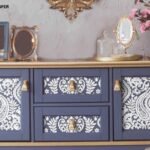Fuchsia, a bold and vivid color that sits between pink and purple on the color wheel, has captured the hearts of designers and fashion enthusiasts alike. This dynamic hue is not just a trend; it represents a statement of creativity and confidence. In this article, we’ll explore the origins of fuchsia, its significance in fashion and design, and how you can incorporate this vibrant color into your own style.
The Origins of Fuchsia
Fuchsia is named after the fuchsia plant, which boasts beautiful, bright flowers. Discovered by the botanist Leonhart Fuchs in the 16th century, the plant’s striking colors were later translated into a pigment, becoming widely used in textiles and paints. The color gained popularity in the 19th century, thanks in part to the rise of synthetic dyes. This transformation not only made fuchsia accessible but also allowed it to evolve as a staple in the palettes of artists and designers.
The Color Psychology of Fuchsia
Colors have a profound impact on our emotions and perceptions, and fuchsia is no exception. Often associated with energy, creativity, and confidence, fuchsia can evoke feelings of excitement and playfulness. Its boldness makes it an ideal choice for those looking to make a statement or stand out in a crowd. In fashion, fuchsia can symbolize empowerment, appealing particularly to those who want to express their individuality and flair.
Fuchsia in Fashion
A Bold Choice for Every Season
Fuchsia is versatile enough to be worn year-round, making it a favorite among fashion designers. In spring and summer, lighter shades of fuchsia’s can convey a fresh and lively vibe, perfect for casual outings or beachwear. During fall and winter, deeper hues can add warmth and richness to any ensemble. Whether it’s a fuchsia’s dress, a tailored blazer, or accessories, this color can seamlessly fit into any wardrobe.
Fuchsia on the Runway
Fashion weeks around the globe have seen fuchsia’s take center stage. Designers like Valentino and Christian Siriano have embraced this vibrant color, showcasing it in their collections. From gowns to streetwear, fuchsia’s has proven to be a color that can be both elegant and edgy. The color’s ability to captivate the audience has made it a recurring theme on the runway, reinforcing its status as a fashion staple.
Styling Tips: How to Wear Fuchsia
Pairing with Neutrals: Fuchsia’s works beautifully with neutral colors like black, white, and beige. A fuchsia’s top with black pants or a fuchsia’s handbag with a neutral dress creates a balanced and chic look.
Mixing with Other Colors: For the bold-hearted, fuchsia’s can be paired with other vibrant colors like teal or yellow for a striking contrast. Just ensure that the accompanying colors complement rather than clash.
Accessorizing: If you’re hesitant to wear fuchsia’s as a main piece, start with accessories. Fuchsia’s shoes, bags, or jewelry can elevate any outfit without overwhelming your look.
Layering: Fuchsia’s can be layered with other colors to create depth. A fuchsia’s scarf or cardigan can brighten up a dull outfit and add a pop of color.
Fuchsia in Interior Design
Transforming Spaces with Fuchsia
Fuchsia’s influence extends beyond fashion into the realm of interior design. This color can add energy and personality to any space. It’s particularly effective in accent walls, furniture, or décor items, creating a focal point that draws the eye.
Creating Balance with Fuchsia
In interior design, balance is crucial. Fuchsia’s can be paired with softer colors like gray or cream to create a harmonious environment. Using fuchsia’s as an accent color—through cushions, art, or decorative pieces—can introduce vibrancy without overwhelming the senses.
Fuchsia Trends in Home Decor
Recent trends show fuchsia’s becoming increasingly popular in modern home design. Whether it’s a statement piece of furniture or vibrant wall art, fuchsia’s is being used to inject life into minimalist spaces. The color’s versatility allows it to fit into various design styles, from contemporary to bohemian.
Fuchsia in Art and Culture
A Symbol of Expression
Artists have long used fuchsia’s to convey emotions and themes in their work. Its vibrant nature can evoke feelings of passion and intensity. From paintings to sculptures, fuchsia’s can transform a piece of art, making it stand out and inviting engagement from viewers.
Cultural Significance
In various cultures, fuchsia’s holds different meanings. In some societies, it represents joy and positivity, while in others, it can symbolize love and affection. This versatility makes fuchsia’s a powerful color in cultural expressions, from festivals to fashion shows.
Conclusion
Fuchsia is more than just a color; it’s a vibrant expression of creativity, individuality, and confidence. Whether in fashion, interior design, or art, fuchsia has the power to transform and energize. By understanding how to incorporate this dynamic hue into your wardrobe and spaces, you can express your personality boldly and uniquely. As trends continue to evolve, fuchsia remains a timeless choice that speaks to the heart of modern style and design.
ALSO READ:KTSF 26 News Anchor Belva Davis: Trailblazer in Journalism
FAQs
What colors pair well with fuchsia?
Fuchsia pairs well with a variety of colors, including neutrals like black, white, and gray. It can also be combined with vibrant colors like teal, orange, or yellow for a bold look.
Is fuchsia suitable for all skin tones?
Yes, fuchsia’s can be flattering on various skin tones. Lighter shades may work better for fair skin, while deeper fuchsias complement medium to dark skin tones beautifully.
How can I incorporate fuchsia into my home decor?
You can use fuchsia’s as an accent color through cushions, throws, artwork, or even a feature wall. It’s effective in creating a lively and inviting atmosphere.
What occasions are appropriate for wearing fuchsia?
Fuchsia’s is suitable for a range of occasions, from casual outings to formal events. It’s a great choice for parties, weddings, and even professional settings when styled appropriately.
Where can I find fuchsia fashion items?
Fuchsia’s fashion items can be found in various retailers, both online and in-store. Look for specialty boutiques, department stores, and popular fashion websites to find a wide selection.











